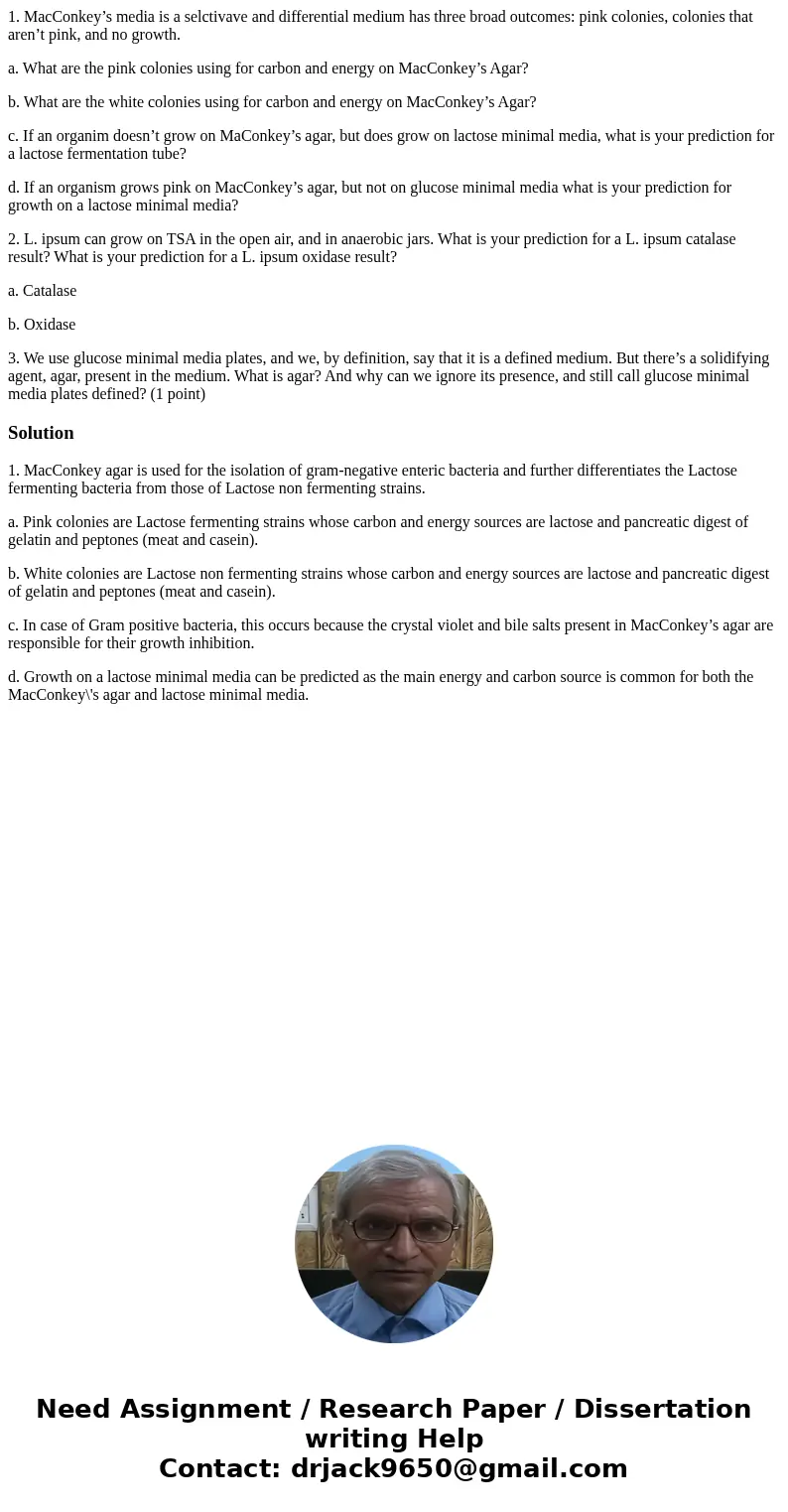1 MacConkeys media is a selctivave and differential medium h
1. MacConkey’s media is a selctivave and differential medium has three broad outcomes: pink colonies, colonies that aren’t pink, and no growth.
a. What are the pink colonies using for carbon and energy on MacConkey’s Agar?
b. What are the white colonies using for carbon and energy on MacConkey’s Agar?
c. If an organim doesn’t grow on MaConkey’s agar, but does grow on lactose minimal media, what is your prediction for a lactose fermentation tube?
d. If an organism grows pink on MacConkey’s agar, but not on glucose minimal media what is your prediction for growth on a lactose minimal media?
2. L. ipsum can grow on TSA in the open air, and in anaerobic jars. What is your prediction for a L. ipsum catalase result? What is your prediction for a L. ipsum oxidase result?
a. Catalase
b. Oxidase
3. We use glucose minimal media plates, and we, by definition, say that it is a defined medium. But there’s a solidifying agent, agar, present in the medium. What is agar? And why can we ignore its presence, and still call glucose minimal media plates defined? (1 point)
Solution
1. MacConkey agar is used for the isolation of gram-negative enteric bacteria and further differentiates the Lactose fermenting bacteria from those of Lactose non fermenting strains.
a. Pink colonies are Lactose fermenting strains whose carbon and energy sources are lactose and pancreatic digest of gelatin and peptones (meat and casein).
b. White colonies are Lactose non fermenting strains whose carbon and energy sources are lactose and pancreatic digest of gelatin and peptones (meat and casein).
c. In case of Gram positive bacteria, this occurs because the crystal violet and bile salts present in MacConkey’s agar are responsible for their growth inhibition.
d. Growth on a lactose minimal media can be predicted as the main energy and carbon source is common for both the MacConkey\'s agar and lactose minimal media.

 Homework Sourse
Homework Sourse